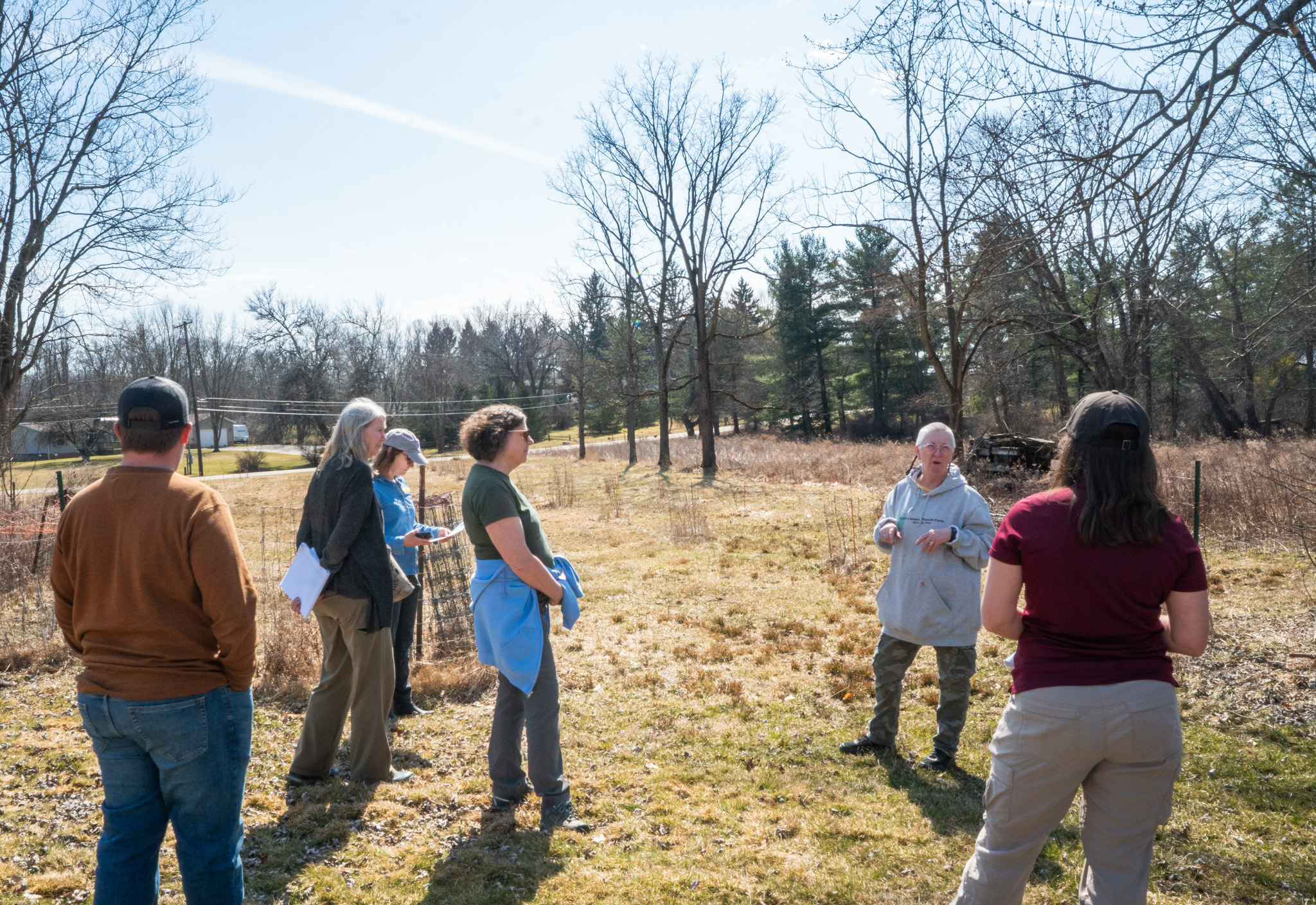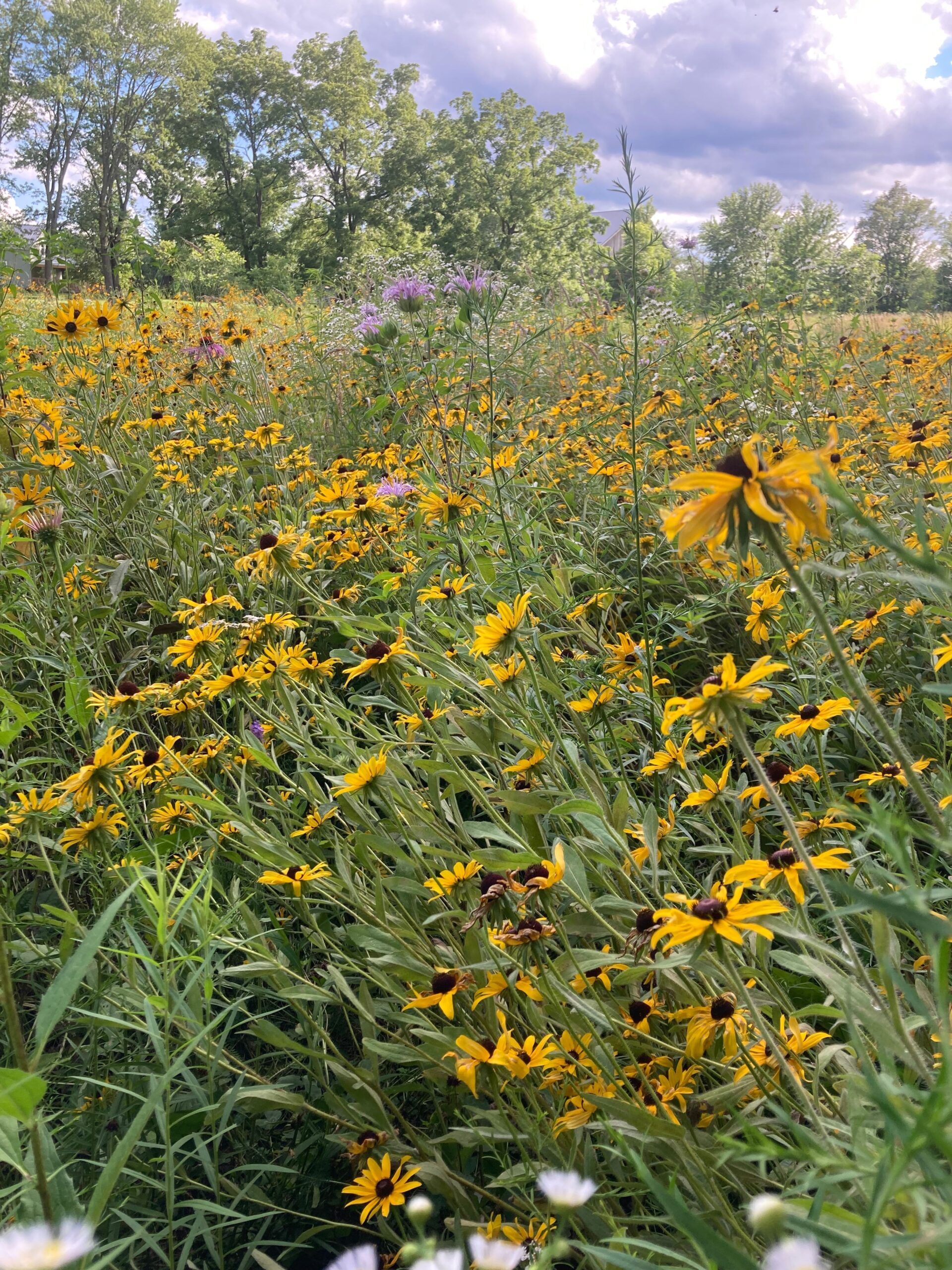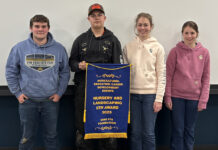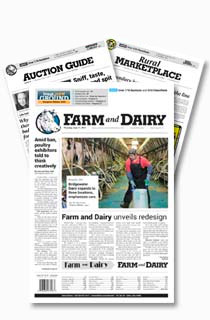
RAVENNA, Ohio — Pollinators need help, but who will answer their troubled calls?
According to the U.S. Department of Agriculture Forest Service, between 2007 and 2023, some bee populations have fallen by 80%. Monarch butterflies have also declined by 59% during the 2023-2024 winter season, as reported by the World Wide Fund for Nature, a nonprofit organization that protects endangered species.
The good news is that landowners can help pollinators at home or on the farm with some simple planning, preparation and help from their local soil and water conservation district.
Pollinator Partnership, a nonprofit organization dedicated to promoting the health of pollinators, held a “Pollinator Habitat on Agricultural Lands Workshop” in Ravenna, Ohio, in March to educate attendees on how to support pollinators.
The workshop consisted of a visit to Pettit’s Green Thumb Farm, where owners spoke of their experiences starting and maintaining pollinator gardens.
“We’re not trying to take good land out of production. We want our farmers to thrive, but we can have our pollinators thrive at the same time,” said Sophia Sorboro, Ohio partner biologist for Pollinator Partnership.

How important are pollinators?
According to the USDA, “three-fourths (75%) of the world’s flowering plants and about 35% of the world’s food crops depend on animal pollinators to reproduce,” which equates to one in every three bites of food an individual eats.
Bees, butterflies, birds, bats and other species pollinate popular crops like apples, bananas, blueberries, strawberries, peaches, potatoes, almonds, coffee, chocolate and more. There are an estimated 200,000 pollinator species worldwide, with 4,000 native bee species located in North America and 500 bee species in Ohio, according to Pollinator Partnership.
As important as they are, pollinator numbers are declining rapidly due to a number of factors, says Mary Welz, Indiana partner biologist for Pollinator Partnership, including loss of habitat, misuse and overuse of pesticides, pests and diseases and changes in climate.
Sorboro says a lack of rain in Ohio during the last growing season could have impacted pollinator populations.
“The last two springs, we’ve had some really rough drought periods, and that affects our food crops, but that affects the growth of native plants as well,” Sorboro said. “If those plants aren’t growing the way they need to in the spring, they may not be able to provide that forage that pollinators need throughout the summer.”
Pollinator habitat types
There are several ways farmers can establish pollinator habitats using native plants on the farm. Hedgerows, made out of shrubs and native plants, can support pollinators while acting as field borders.
Buffers are placed along waterways, field edges or areas prone to runoff to protect water quality, soil and wildlife. By planting a mix of grasses and native wildflowers as buffers, they can attract pollinators in addition to filtering nutrients and halting the impacts of flooding. Wind breaks are also beneficial by breaking up the wind, effectively protecting crops.
Cover crops act as a secondary benefit to pollinators, says Sororbo, as they add nutrients to the soil, stop erosion, protect water quality and, if they bloom, can feed bees and other pollinator species. Marginal lands — land not being used like wetlands, highly eroded soil and roadsides — can support native wildflowers.
Wildflower strips also act as a forage for pollinators and a nesting habitat. These strips can go in the middle of a field or between rows of crops.
Residue and tillage management is another way farmers can improve their soil health and prevent erosion while providing habitat for pollinators; leaving the soil alone allows insects like bees to burrow over winter.
Site preparation
Before taking action, there are several aspects farmers need to consider to prepare a site for native plants. “Good site prep is essential,” Welz said. “It is not an option to skip site prep. You wouldn’t build a house without a good foundation.”
Landowners should first evaluate the sun, as native wildflowers can require full sun or partial sun, and select a spot that adheres to the plants selected.
Soil should be tested as well and the slope of the land should be considered, as a steeper slope requires different methods of site preparation, planting and management. Farmers should also think of the site’s land use history — cropland, pasture, reclaimed mine land, use of pesticides or insecticides — as different land conditions will also require different methods of preparation.
Once a piece of land is selected, site preparation could consist of mowing to get rid of existing vegetation, brush management to remove invasive species and woody vegetation via herbicides, cutting or prescribed burning and tarping by using a plastic tarp or sheet with weights on it to cover the ground for keeping sun and water out to kill off vegetation.
According to Pollinator Partnership, site preparation is complete when 5% or less of existing vegetation remains. Planting a pollinator habitat can be a daunting task, but Hilda and Bruce Pettit from Pettit’s Green Thumb Farm have found a way to make site prep, seeding and aftercare look easy.
How to create a pollinator field
Hilda and Bruce Pettit own 10 acres in Ravenna, Ohio, where they have established two pollinator fields — with the help of Portage County Soil and Water Conservation District — that span 2.6 acres. They also grow a variety of fruits and vegetables — something they consider their “retirement project.”
The Pettits began site preparation for their first pollinator field in the fall of 2020 by mowing existing vegetation and using an herbicide to kill it off, as well as the invasive species multiflora rose. Then, they plowed the soil to prepare for seeding.
The Pettits waited to seed until the ground froze over twice. They planted 18 different varieties of wildflowers in December 2020 and, that spring, they saw their first blooms.
In the second field, they planted 28 varieties of wildflowers in the spring of 2022. The Pettits used similar field preparation methods, but prepped the field in fall and ran a disk over the field to prepare for seeding instead of plowing. Both plantings worked great — regardless of season — but Hilda Pettit preferred the fall planting as spring can be a busy time of year for farmers.
Over the years, the Pettits have seen other plants start to pop up via birds and the wind carrying the seeds to the fields. If the plants are not native, Hilda Pettit will keep them in the ground as long as they aren’t invasive.
“We let them go because they may not be native, but they’re pollinated,” Hilda Pettit said. “So we have a huge diversity of plants and they bloom all summer. There’s something blooming all the time.”
The Pettits see a wide range of pollinators now, including different varieties of birds and butterflies, like monarch butterflies. Although they have used herbicide in the past, they only spray when necessary and refrain from using it when their honeybees roam the property in the summer.

The Pettits began maintenance work on their first field three years after its first bloom by mowing half of it and the other half the following year. They won’t mow the field for another three or four years.
Mowing pollinator fields is important as it breaks up the thick vegetation, allows new plants to grow and kills off unwanted plants like invasives or native species that have become too dominant.
Hilda Pettit says the fields require minimal maintenance and offer lots of benefits, including a low carbon footprint, pollinators and a pretty view. The Pettits’ ethos on the farm is simple: living with plants instead of eliminating them.
“Just because it’s a weed, doesn’t mean it doesn’t have a purpose,” Hilda Pettit said. “It might not be useful to us, but it’s there for some kind of reason, and more than likely, a pollinator bug is using it for food.”
To view a list of pollinator plants for your region, visit https://pollinator.org/guides. For more information on Pettit Green Thumb Farm, visit https://www.pettitsgreenthumbfarm.com/. For more information on Polliantor Partnership, visit https://www.pollinator.org/.
(Liz Partsch can be reached at epartsch@farmanddairy.com or 330-337-3419.)









